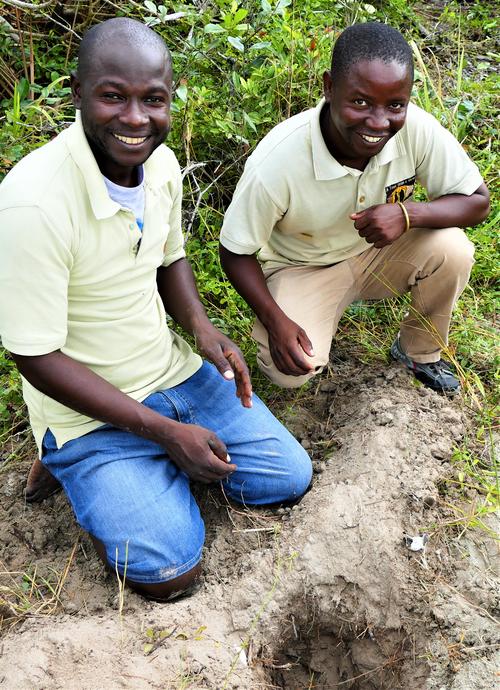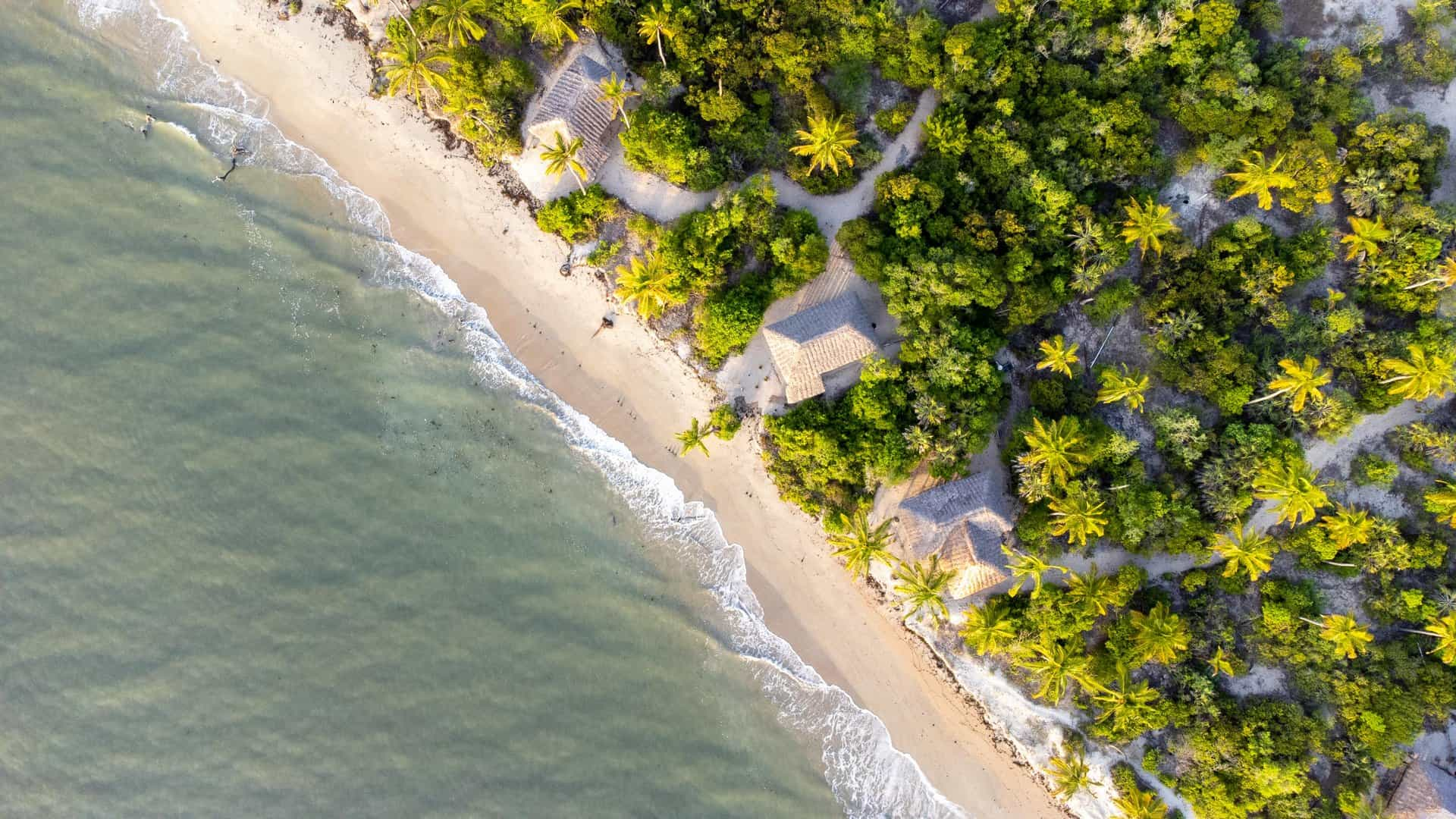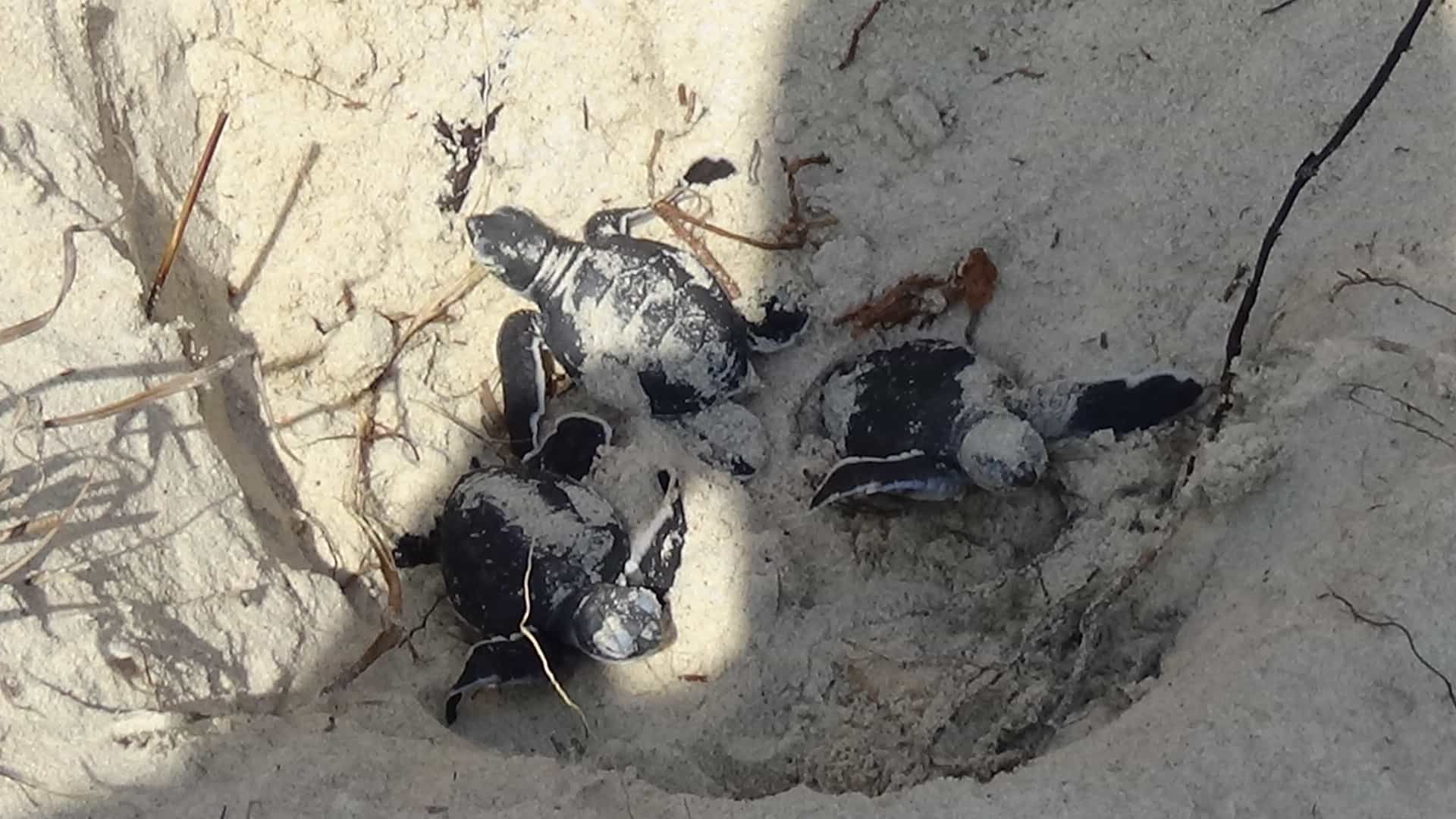Saadani is a unique national park, not only in Tanzania, but anywhere in the world.
The possibility of witnessing rare green turtles hatching just metres from where lions may be denning with their young is an image few could fail to be excited by. Tidal salt flats, the essence of this unique safari destination, reveal a Hogwarts marauders map of much of Africa’s great wildlife. An early morning walk unveils the previous night’s drama; deep set elephant footprints where two bulls tangled to establish dominance or the meandering trail of a lioness and her cubs, periodically closing together for a reassuring nuzzle. The high tide then cleans the map ready for the following night’s print to be formed.
Amongst the very best of what this special coastal park can offer is a turtle hatching event. Witnessing tiny young turtles scramble their way out of the nest, across the dangerous, exposed beach and into the vast ocean, moves many an observer to tears. They must battle the odds to cross the Indian Ocean and return to the very same sands some 30 years later to lay their own eggs.
A thousand years ago, the beaches of Eastern Tanzania would have been filled with green turtle nests and mass hatching events would have been a regular occurrence. Unfortunately, our own success as a species changed all that as it has across so much of the world. The turtles may clamber up the beach concealed by night, but their arrival is not subtle. Flippers dig deep into the sand as they haul 100+kgs of reptile up the beach to the digging site and, come the morning, a mammal with the intelligence of homo sapiens sapiens makes short work of the substantial protein bunker filled with over 100 eggs. Despite this, the remoteness of Saadani allowed green turtles to at least survive and this particular tide of destruction has begun to be reversed.

Map showing Madete Gate and the marine park in yellow.
Saadani has existed as protected land since 1969, when the initial game reserve was formed. This land has twice been extended and the reserve, now covering 1100sqkm, has achieved national park status. Around the time the final extension took place in 2004, the then president, Jakaya Kikwete, agreed to create a unique marine park which not only protected the beach and ocean but also a sizeable area inland, well used by large land mammals and, until then, outside the national park. It was given the name Madete, after the tidal creek at its centre. Madete now provides a substantial protected corridor for wildlife between Saadani National Park and the white sand beaches where the turtles lay their eggs.

Hamisi Kasa (left)
For almost two decades, one man has been at the heart of the turtle protection, Hamisi Kasa. Each morning he walks the extent of the marine park beach looking for remains of flipper marks leading up above the high tide line where the rare reptiles are most likely to deposit their eggs. When he finds a nest, he takes the GPS coordinates, checks the number of eggs laid and then hides all evidence of its existence so as to remove any likelihood of human predation. Turtle eggs are, of course, predated by other animals, particularly monitor lizards, but humans are by far their greatest enemy.
After many years of protecting turtle eggs and delicately checking them as they develop towards hatching, Hamisi has become adept at working out when they are likely to hatch and over how long a period the phenomenon will continue. This allows him to inform the visitors to Simply Saadani Lodge about the likelihood of them witnessing a new born turtle dash to the ocean during their stay. Many young turtles which have already hatched out of their shell, will wait, covered by sand, for the rustle of siblings emerging beneath them before making the dash. Some may sit for a day or more and Hamisi knows that once the first youngsters begin to break free of the shell, he is likely to be able to bring visitors to the nest during daylight hours and find turtles waiting to go, beneath the beach surface. As soon as he scoops away the sand, they begin to scramble over the tide line flotsam, paddling the air in a desperate lunge for the relative safety of the Indian Ocean waters. This journey would usually take place at night because of the dangers from predators such as crabs, fish eagles, and the, aforementioned monitor lizards. Luckily for these young hopefuls, the presence of homo sapiens intent on nothing more than marine conservation and with parental instincts set on manic alert, safe passage to the water is assured.
Madete Marine Park protects around 5km of the Saadani beach and tens of thousands of young turtles have survived their incubation and made it out into the ocean because of the existence of the park and the efforts of Hamisi and the Simply Saadani research centre. However, the full extent of the original turtle beach, before human communities took hold here is far greater than these 5km. Each year several turtles come ashore outside the boundaries of the marine park and it is important to keep good relations with fishing communities in the area to encourage them to inform Hamisi of any new nests outside the core area so the eggs can be moved to safety. Generally speaking, eggs can be moved within the first 48 hours of being laid without harming the developing turtles. It is also important to judge the depth of each nest and try to mirror it when replacing the eggs into the sand. The sand warms the closer to the surface it is and any extreme disparity will cause the entire clutch to die. Even at slight variations in temperatures the sex of the clutch may be changed entirely.
The beachfront lodge at Simply Saadani is close enough to Madete to mean that every year or so turtles will lay nests beneath or around the elevated chalets. They always come in twos with females laying upwards of 100 eggs , on two separate occasions, approximately two weeks apart. Hamisi believes this year is set to be an exceptional one for nests because both he and the other Tanzania turtle conservation team, based on Mafia Island, have found extraordinary levels of activity in January and February. This is very much the low season for turtle breeding off the Tanzania coast and, in fact, there has almost never been nests recorded in the opening two months. This year there have been six by the middle of February and so hopes are high for a proliferation through June-September, which is the main laying season.

Simply Saadani Lodge
Anyone who is lucky enough to be on a Tanzania safari in the latter two weeks of March, or who is resident in Zanzibar or on the mainland and has an interest in marine conservation, can find out more from www.tentwithaview.com . Turtles will be hatching on most days between 15th March and 1st April and one of the nests, laid outside the protected marine park, had been removed into the middle of Simply Saadani Camp. These hatchlings could be making their dash to the ocean from beside your room!


